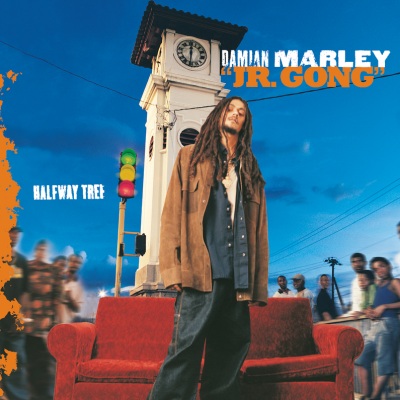
Halfway Tree
In Kingston, Jamaica, the neighborhood of Halfway Tree is seen as a meeting place, a junction between the rich and poor parts of town. Damian Marley, the youngest son of reggae icon Bob Marley, wants his music to do the same thing, to be a bridge between the rich and the poor, the new and the old. For the most part, he succeeds as his North American debut offers enough social consciousness to keep his father's fans happy while still dabbling in newer forms of dancehall and hip-hop. North Americans may be familiar with Marley's work from his cameo appearance on Eve's album Scorpion. On Halfway Tree, Eve returns the favor as she appears on "Where Is the Love?," one of the funkiest tracks on the album. Another highlight is "Stand a Chance," which features some funky harmonica as well as the rhymes of Treach of Naughty By Nature as well as the sweet vocals of dancehall legend Yami Bolo. Tracks like "More Justice" and "Give Dem Some Way" feature the kind of social commentary you'd expect from a member of the Marley clan. The family influence is also felt throughout the album — his brother Stephen Marley, produced much of the album and they even sample their father's classic "Could You Be Loved" on their track "And Be Loved." But Marley also strays away slightly from family tradition, dealing with love and sex in a raw, direct way on tracks like "Mi Blenda" and "Cool and Dandy." For the most part, Marley does an excellent balancing act. He handles his legacy and his future flawlessly and what's more surprising is that he makes it look easy.
